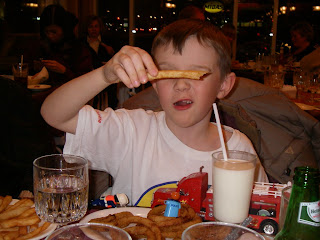Of all the places in Canada, the North is the most food insecure. The North faces a number of factors that intensify problems north of sixty. The Yukon is at high risk for earthquakes (in 1964 a quake killed 134 people in Alaska), highways face more extreme conditions while dependance on trucked-in produce is high and energy prices are heading up, extreme weather conditions make flown-in produce both dear and uncertain, and local production is almost non-existent.
The Yukon does not grow its own food. The Globe and Mail reports that the total population of food animals, for example, is about that of a large southern farm: 220 cattle, 160 hogs, 62 farmed elk, 130 goats and sheep, and 150 farmed bison. That is the population of farmed animals for the whole of the Territory. Production of grains and vegetables is similarly anaemic.
It is true that conditions are not the best for southern-style agribusiness. After all, the number of frost-free days ranges from 93 down to 21. But that doesn't mean that local production can't exist; there was a government program back in 1988 that studied how to grow wheat, peas, and oilseed. And an Albertan couple have spent the last seven years overcoming the crap conditions and poor soils to grow oats, barley, carrots and potatoes. The couple, Steve and Bonnie Mackenzie-Grieve, have taken almost the whole food chain under their control, milling their own grain, and washing and bagging their own potatoes.
But although there is a history of small-scale agriculture in the Yukon, there is currently significant resistance to agriculture in the North. Rick Tone, executive director of the Yukon Agricultural Association, is quoted in the G&M as saying "They [much of the northern population] see agriculture here as a blot on the environment." Fair enough, but what then of wild harvesting? Migratory populations have long served to keep the northern population fed (and housed, and clothed). Part of the problem is cramming too many people into an environment not equipped to handle them, but also by that population's reliance on a southern diet of chicken, pork, and beef. The Lapp of Finland have successfully ranched reindeer for generations; what is there to stop northerners from doing the same? This would mesh northern requirements with northern conditions. It doesn't meet the requirements for produce, but raising local food production from the current ~2 percent of needs, well, any increase would help.
Ultimately, of course, maintenance of a northern population requires both local food production, southern supplement (particularly with the extreme conditions of the North), and a sustainable population size. There was a reason that the Inuit were never too populous--they lived in an environment that restricted population growth. Modern northern populations are dependant on fossil fuels; the houses are not built for the northern environment, but rather to be heated with imported fuel. Food is transported, the local population is abstracted from the environment, and if the oil stops, everything stops. Essentially, these are the problems we all face, just writ large. And the solutions are the same; solutions that are local, sustainable, and environmentally sensitive.




